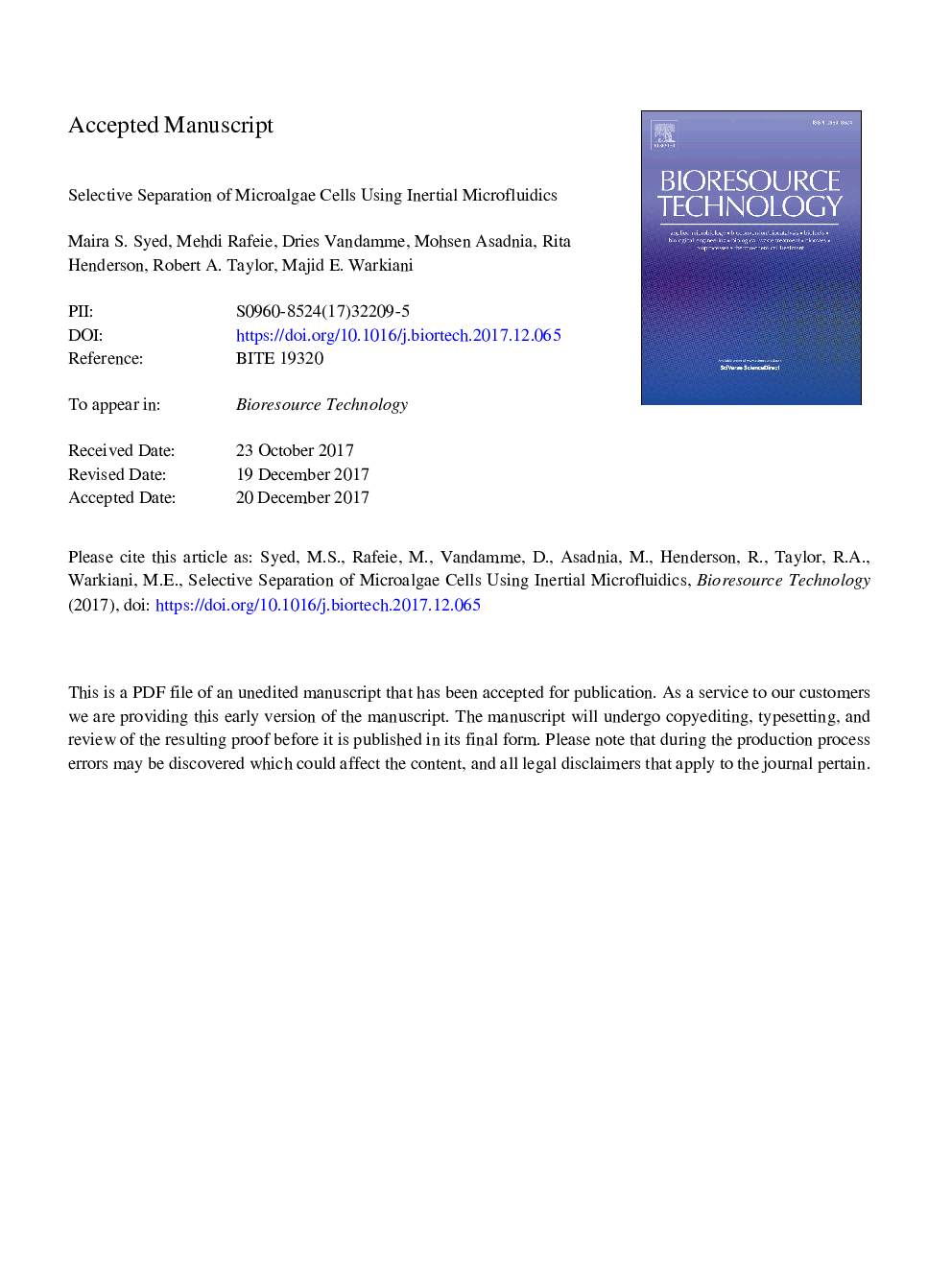| Article ID | Journal | Published Year | Pages | File Type |
|---|---|---|---|---|
| 7068482 | Bioresource Technology | 2018 | 27 Pages |
Abstract
Microalgae represent the most promising new source of biomass for the world's growing demands. However, the biomass productivity and quality is significantly decreased by the presence of bacteria or other invading microalgae species in the cultures. We therefore report a low-cost spiral-microchannel that can effectively separate and purify Tetraselmis suecica (lipid-rich microalgae) cultures from Phaeodactylum tricornutum (invasive diatom). Fluorescent polystyrene-microbeads of 6â¯Î¼m and 10â¯Î¼m diameters were first used as surrogate particles to optimize the microchannel design by mimicking the microalgae cell behaviour. Using the optimum flowrate, up to 95% of the P. tricornutum cells were separated from the culture without affecting the cell viability. This study shows, for the first time, the potential of inertial microfluidics to sort microalgae species with minimal size difference. Additionally, this approach can also be applied as a pre-sorting technique for water quality analysis.
Related Topics
Physical Sciences and Engineering
Chemical Engineering
Process Chemistry and Technology
Authors
Maira S. Syed, Mehdi Rafeie, Dries Vandamme, Mohsen Asadnia, Rita Henderson, Robert A. Taylor, Majid E. Warkiani,
